The Lutino Parakeet: A Ray of Sunshine in the Avian World
We'll show you that a Lutino Parakeet is more than just a burst of yellow, orange, and white feathers. It's the loveliest pet for bird enthusiast!
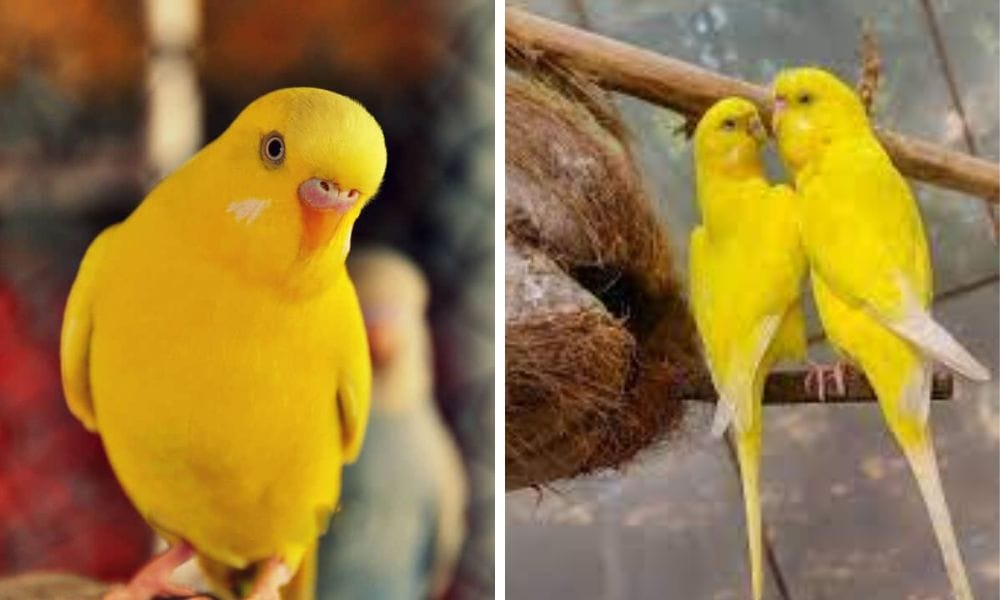
Key Takeaways:
Lutino parakeets, with their bright yellow plumage and charming personalities, have captivated bird enthusiasts around the globe. These friendly and affectionate birds love interacting with their owners, making them excellent companion birds. Their vibrant personality not only makes them sociable and intelligent but also highlights their ability to bond deeply with their caretakers. In this comprehensive guide, we’ll delve into the world of lutino parakeets, exploring everything from their genetics and breeding to their care and behavior.
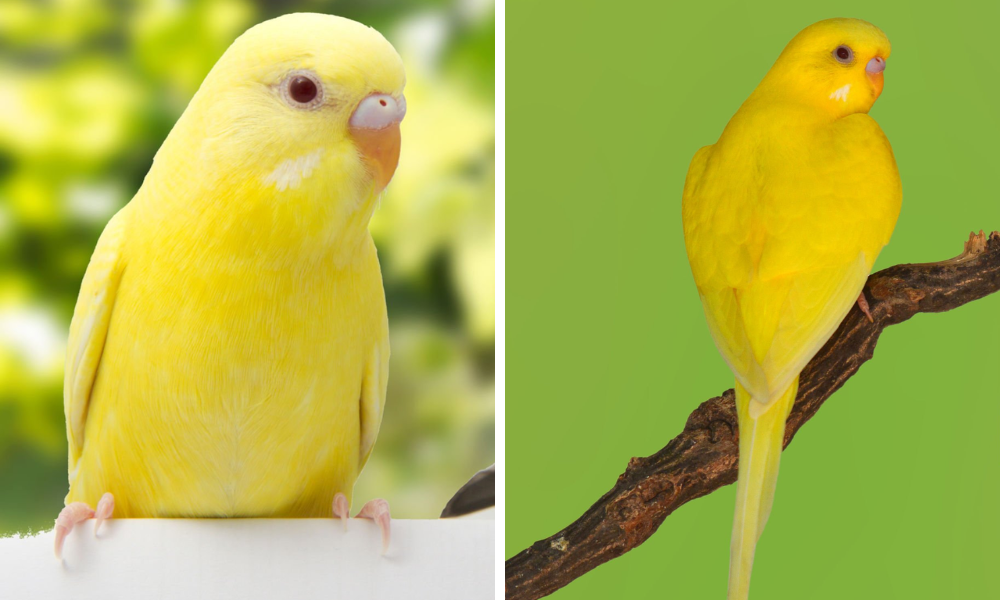
What Are Lutino Parakeets?
Lutino parakeets are a stunning variety of the parrot family, specifically a color mutation of the popular budgerigar, or budgie. The lutino coloring is characterized by a vibrant yellow pigmentation throughout the body, with contrasting orange beaks and pink feet. The head of lutino parakeets often features unique feather colors and markings, adding to their distinctive appearance. The most distinctive feature of these birds is their pink eyes, a result of the ino mutation that gives them their unique appearance.
Lutino parakeets love to explore their surroundings and have lots of personality.
The Genetics Behind the Lutino Mutation
The lutino trait is a sex-linked recessive gene, which means that it is carried on the sex chromosomes and must be present in both parents to be expressed in the offspring. The terms ‘Albino’ and ‘Lutino’ refer to two variations of the same mutation in budgies, known as Ino. The yellow lutino was born as a result of selective breeding practices initiated by enthusiasts during the early 1800s. When breeding lutino budgies, it’s important to understand that not all lutino males will guarantee lutino babies, as the genetics can be quite complex. Female lutino budgies, on the other hand, can only be lutino if they inherit the gene from their father, as they have only one sex chromosome (Z).
Breeding Lutino Budgies: Expectations and Realities
Lutino budgie breeding expectations should be set with a clear understanding of genetics. When two non-lutino birds carry the ino gene, there is a chance of producing lutino offspring, as they have been selectively bred for this trait. However, careful breeding is required to increase the likelihood of lutino babies. Breeding lutino budgies is not as easy as it might seem, and mistakes in breeding practices can lead to health issues and genetic complications, especially with color mutations like lutino. It’s also worth noting that lutino budgies are not as rare as one might think, thanks to dedicated bird breeders who specialize in this mutation.
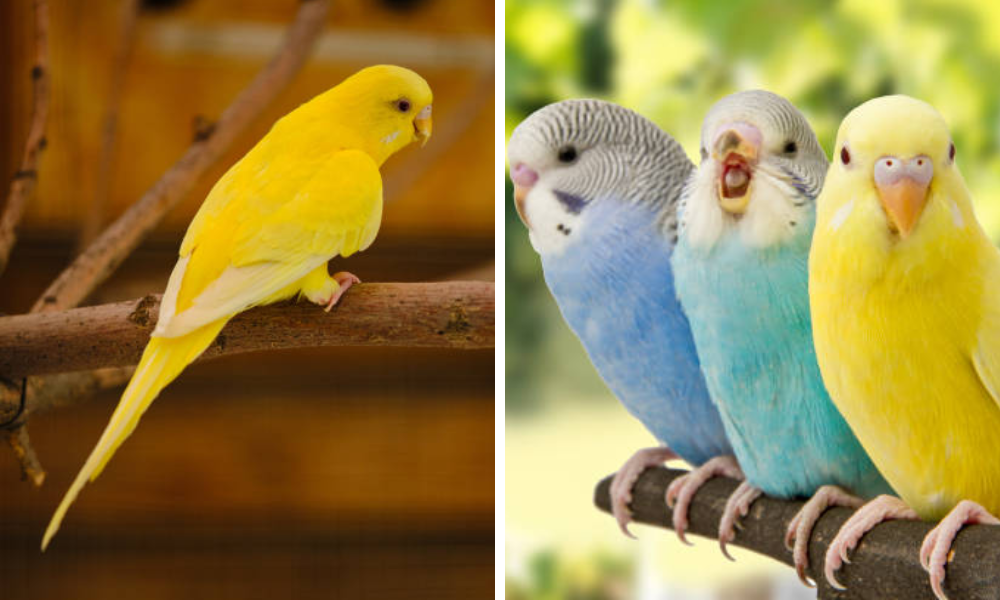
Identifying Male and Female Lutino Parakeets
Determining whether you have a male or female lutino can be tricky, as the usual indicators like cere color can be less distinct. In adult male lutino parakeets, the cere is typically a light blue cere, while females may have a pink or purple cere. However, these colors can vary, and not all lutino males will have the expected cere coloration.
The Diet of Lutino Parakeets
A balanced diet is essential for maintaining the optimal health of lutino parakeets. Offer dark leafy greens, a variety of vegetables, and high-quality bird food to ensure they receive all the necessary nutrients. Spray millet can be given as a treat, but it should not make up the bulk of their diet. Always provide fresh water and avoid foods that are toxic to birds.
Socializing and Bonding with Your Lutino Parakeet
Lutino budgies talk and interact with their owners, making them delightful pets. Lutino parakeets may be quiet when they are settling into a new environment. Vocalization and signing play a crucial role in bonding, as these behaviors help in social interaction and understanding the behavioral aspects of budgies. These affectionate birds enjoy bonding with their human companions and can form strong attachments. It’s important to spend quality time with your lutino parakeet daily to foster a trusting relationship and keep them mentally stimulated. Additionally, finding a companion can bring a lutino parakeet out of its shell and enhance its social behavior.
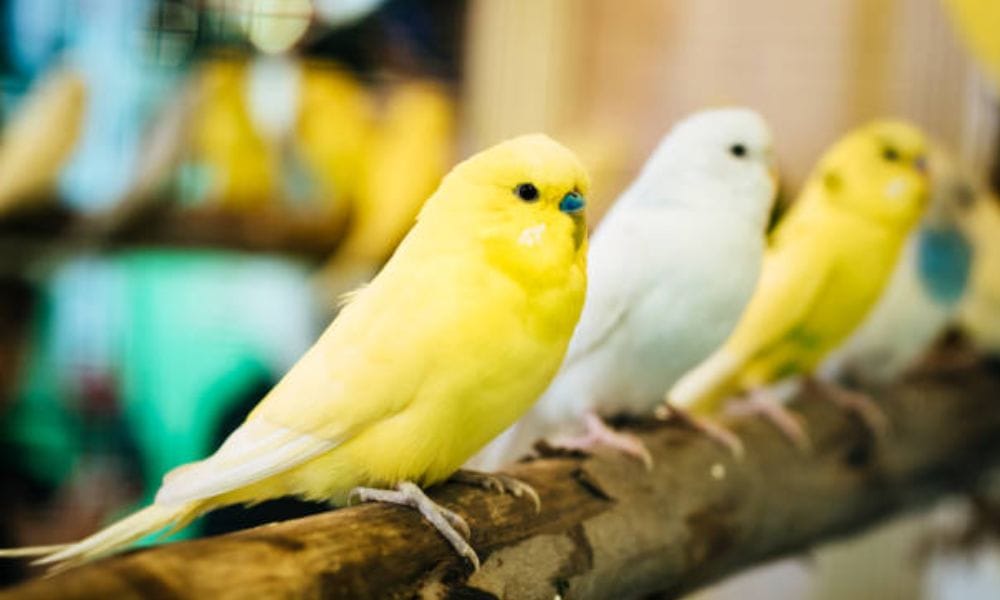
The Importance of Flight and Exercise
Lutino parakeets, like all budgies, need the opportunity to fly and exercise to maintain their physical health. It is crucial to place their cage in the right location, away from drafts, windows, and kitchens, ideally at or below eye level. Ensure they have a safe space to stretch their primary flight feathers and engage in natural behaviors. A spacious cage with room for flight and play is essential, as is supervised time outside the cage in a bird-proofed area.
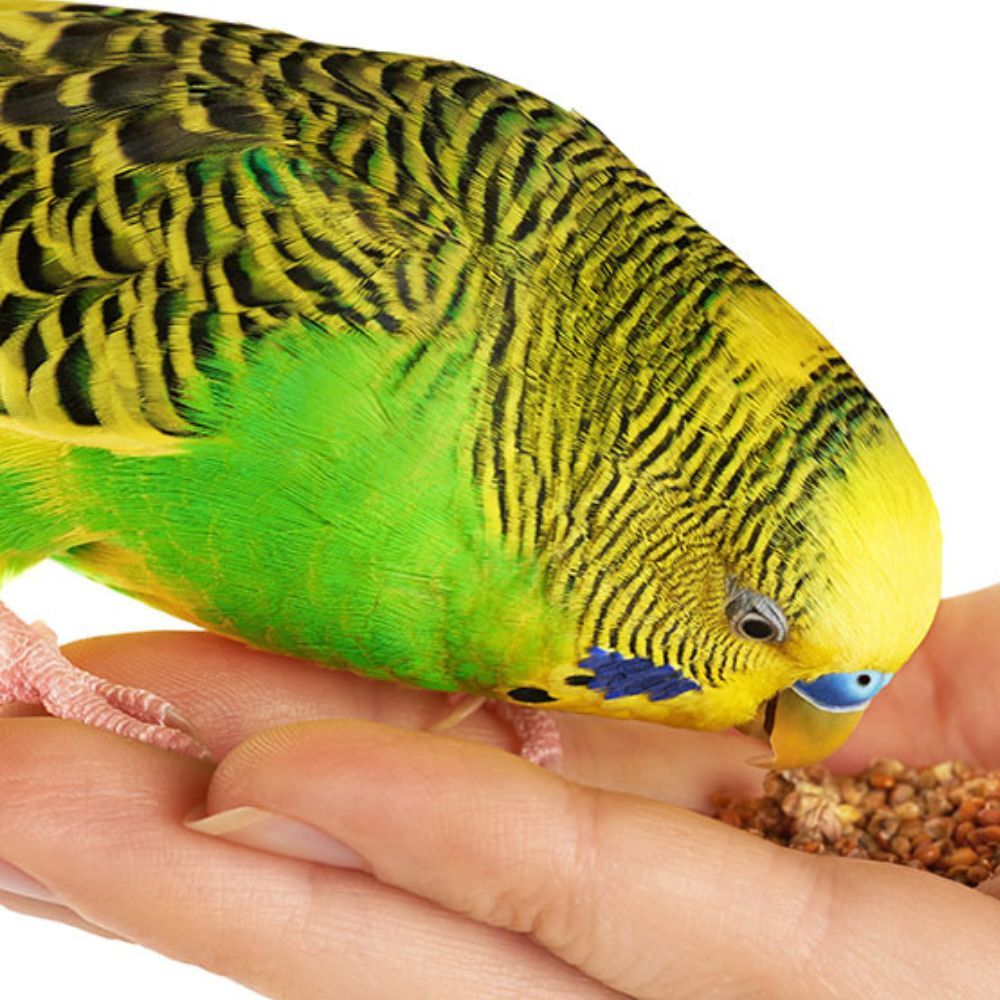
Health Concerns in Lutino Parakeets
While lutino parakeets are generally hardy birds, they can be prone to certain health issues. Lutino parakeets, like the Creamino Mutation, can have red eyes, which is a distinctive feature to watch for in their health assessments. Regular veterinary check-ups can help catch any problems early. Be on the lookout for signs of illness, such as changes in behavior, appearance, or droppings, and seek professional advice if you have any concerns. With proper care, lutino parakeets can live to be about 10 to 15 years old, and ongoing breeding practices continue to ensure their vibrant color persists.
Caring for Lutino Budgies: A Guide to Their Unique Needs
Caring for lutino budgies requires an understanding of their unique needs, especially when it comes to their sensitivity to sunlight due to the lack of melanin in their feathers. These radiant birds, with their striking budgie yellow plumage and contrasting orange beak, are not just visually appealing but also have specific care requirements. For instance, lutino females and males alike need protection from direct sunlight to prevent health issues, as their light-sensitive eyes are more prone to damage than those of a normal male or female budgies.
Moreover, the ino gene mutation that gives lutino budgies their distinctive coloration can also lead to vision problems. Therefore, it’s crucial to provide them with a habitat that has ample shade and is enriched with various toys and perches to stimulate their minds and encourage exercise. A balanced diet rich in vitamins can help maintain their vibrant feathers and overall health. Remember, whether you have a guaranteed lutino male or are caring for albino lutino budgies, their environment plays a pivotal role in their well-being. For those looking to adopt lutino budgies, it is advisable to seek out reputable breeders or aviaries to ensure the health and well-being of the birds.
Potential owners should carefully consider their choice and be informed about the specific care requirements of lutino parakeets before adopting.
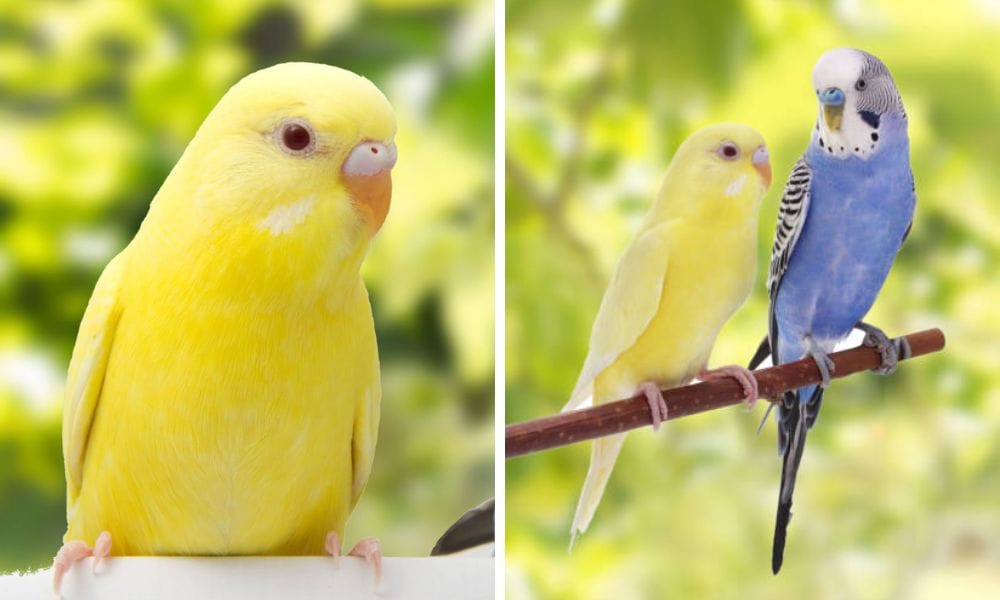
The Distinctive Features of Male Lutino Budgies
When it comes to identifying male lutino budgies, there are a few distinctive features that set them apart. Unlike their female counterparts, males often have a brighter, more vivid hue to their plumage, which can be a dazzling sight. Their ceres—the fleshy, colorful area above the beak—tend to be a vibrant blue or purplish shade, which is a telltale sign of their sex. This is particularly noticeable as they mature, making it easier for owners and breeders to differentiate between the genders.
Moreover, male lutino budgies are known for their more pronounced singing and chirping abilities. They are the vocalists of the species, using their songs to attract mates and communicate within the flock. This behavior is not only a joy to witness but also serves as a behavioral indicator of a male budgie. Observing these traits can help enthusiasts and professionals alike in identifying the sex of these charming birds, ensuring proper pairing and breeding practices.
Understanding the Albino Lutino Budgie Phenomenon
The albino lutino budgie is a fascinating variation that captures the hearts of many avian enthusiasts. This unique bird is the result of a combination of the lutino mutation and the albino gene, leading to a bird with a stunning, pure white appearance. The absence of melanin in these birds results in a lack of coloration in the feathers, eyes, and skin, giving them an ethereal, ghostly beauty that is hard to miss. The albino lutino budgie is a testament to the incredible diversity that can be achieved through selective breeding and genetic variation.
It's important to note that the albino lutino budgie is a product of a sex-linked recessive gene, which means that the trait can be carried by birds without expressing it. This genetic trait can be passed down to offspring, and breeders must have a good understanding of genetics to predict the likelihood of these unique birds occurring in their flocks. The albino lutino budgie is not only a visual marvel but also a fascinating subject for those interested in the genetics of bird breeding.
Understanding the Breeding Patterns of Lutino Budgies
Breeding lutino budgies can be both rewarding and challenging due to the recessive genes involved in their coloration. When you breed lutino budgies, you’re working with a sex-linked recessive gene, which means that both parents must carry the gene for there to be a chance of producing lutino offspring. Breeding two Single Factor Spangles can produce a Double Factor Spangle, which has distinctive traits such as black eyes with white irises and unique cere coloration. A dark eyed clear budgie paired with a lutino can result in a fascinating array of colors in their chicks. However, most lutino budgies are not guaranteed to be male or female based solely on their color, as the lutino trait can appear in both genders.
It’s also interesting to note that when a normal male budgie is paired with a lutino female, the male offspring are likely to be split for lutino, carrying the gene without expressing it. This means they can later produce lutino offspring when paired with the right mate. Albino budgie genetics work similarly, as they are part of the same ‘ino’ mutation family. Understanding these genetic intricacies can greatly enhance the success rate for enthusiasts looking to breed lutino budgies and contribute to the diversity of this captivating species.
Lutino parakeets are not commonly found in the wild due to specific breeding practices. If you're interested in taking one of these unique birds home, connecting with local breeders is important.
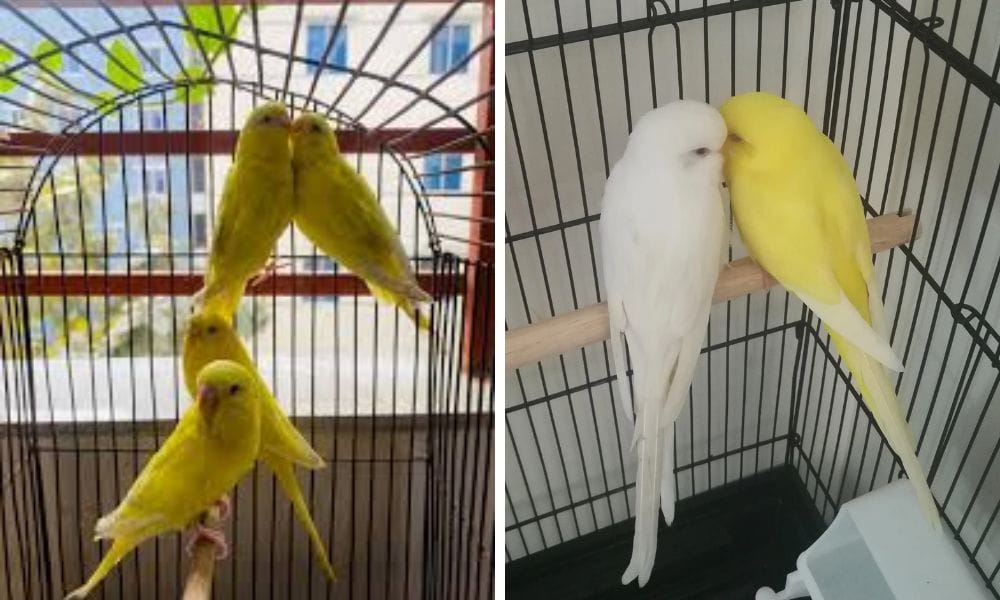
Lutino and Albino Parakeet
The Role of Genetics in Lutino Budgie Colors
The ino gene mutations responsible for the lutino budgie colors can also result in other variations like the albino and creamino budgies. These mutations affect the green pigmentation in green series budgie or the blue pigmentation in blue series budgie, leading to the different shades seen in lutino and albino budgies.
Summary
Lutino parakeets are a captivating color mutation of the common budgie, known for their bright yellow feathers and pink eyes. They require a balanced diet, plenty of exercise, and social interaction to thrive. Understanding the genetics behind their breeding can help enthusiasts produce healthy lutino offspring. With proper care, these birds can be a joyful addition to any home or aviary.
FAQ Section
Q: Can lutino budgies talk?
A: Yes, lutino budgies can talk and mimic sounds, just like other budgie varieties. With patience and consistent training, they can learn a variety of words and phrases.
Q: How can I tell if my lutino budgie is male or female?
A: Determining the sex of a lutino budgie can be challenging due to the mutation affecting cere color. Adult males typically have a light blue cere, while females may have a pink or purple cere. For a definitive answer, consider DNA sexing or consulting with an experienced bird breeder.
Q: Are lutino budgies rare?
A: Lutino budgies are not as rare as they once were, thanks to breeders who specialize in this color mutation. They are now more readily available for those interested in keeping these beautiful birds as pets.
Q: Can lutino budgies change their behavior over time?
A: Yes, lutino budgies can change their behavior over time with the right care and setting. They are intelligent and adaptable birds that enjoy interacting with people, which can help them become more comfortable in new environments.

